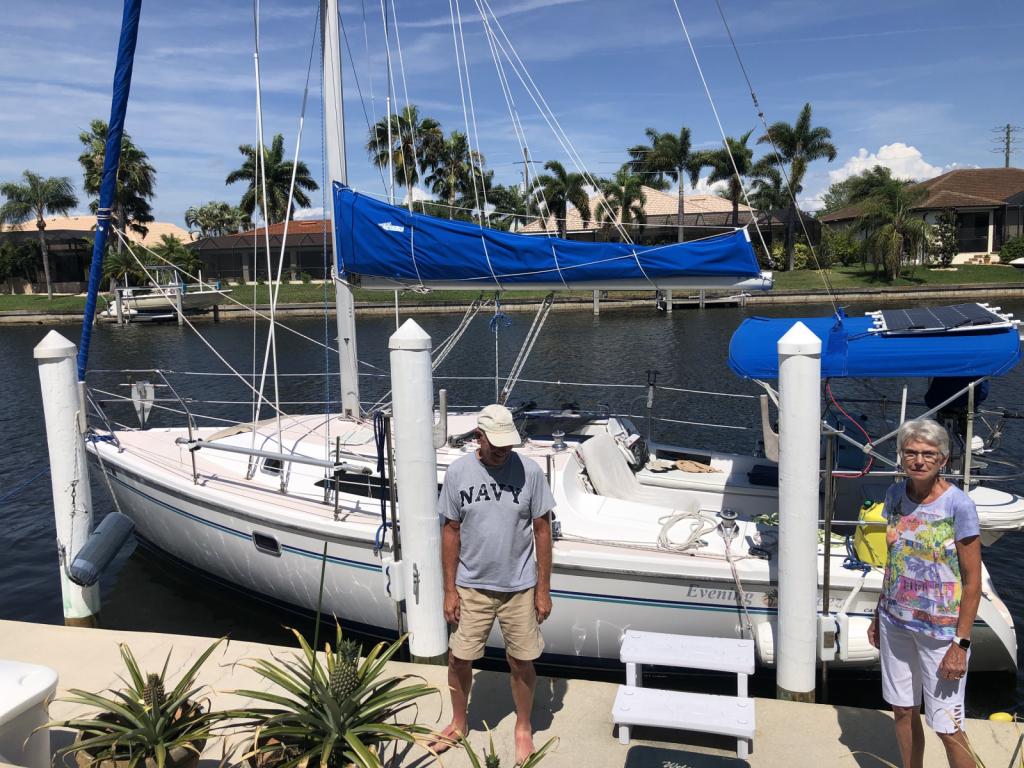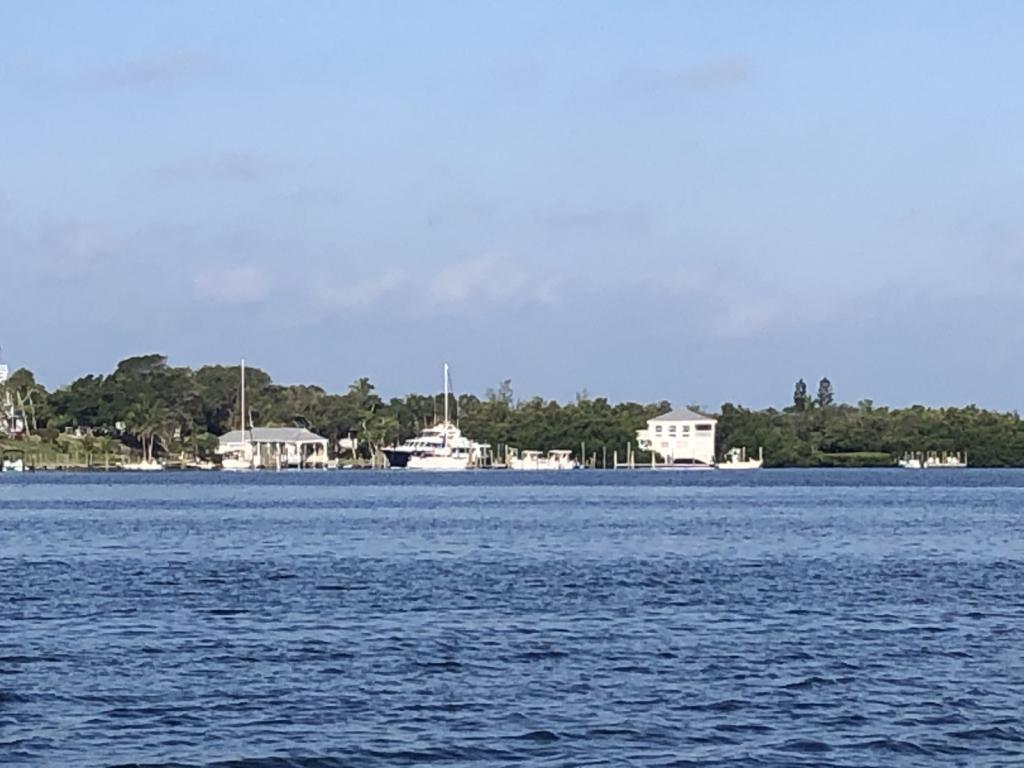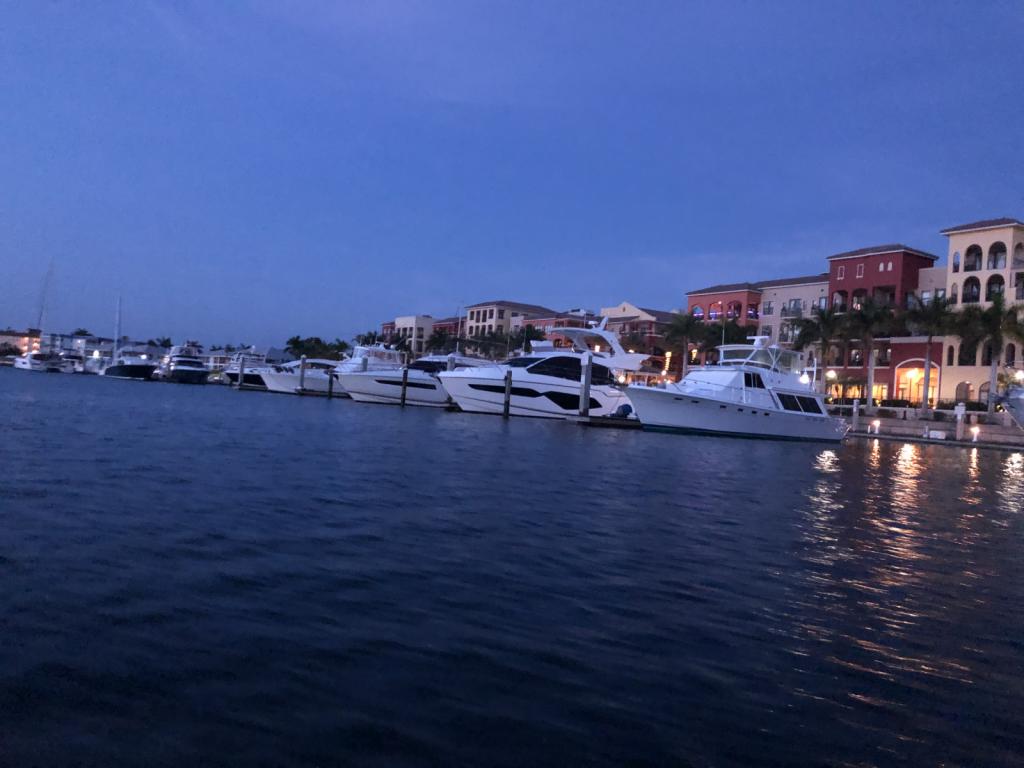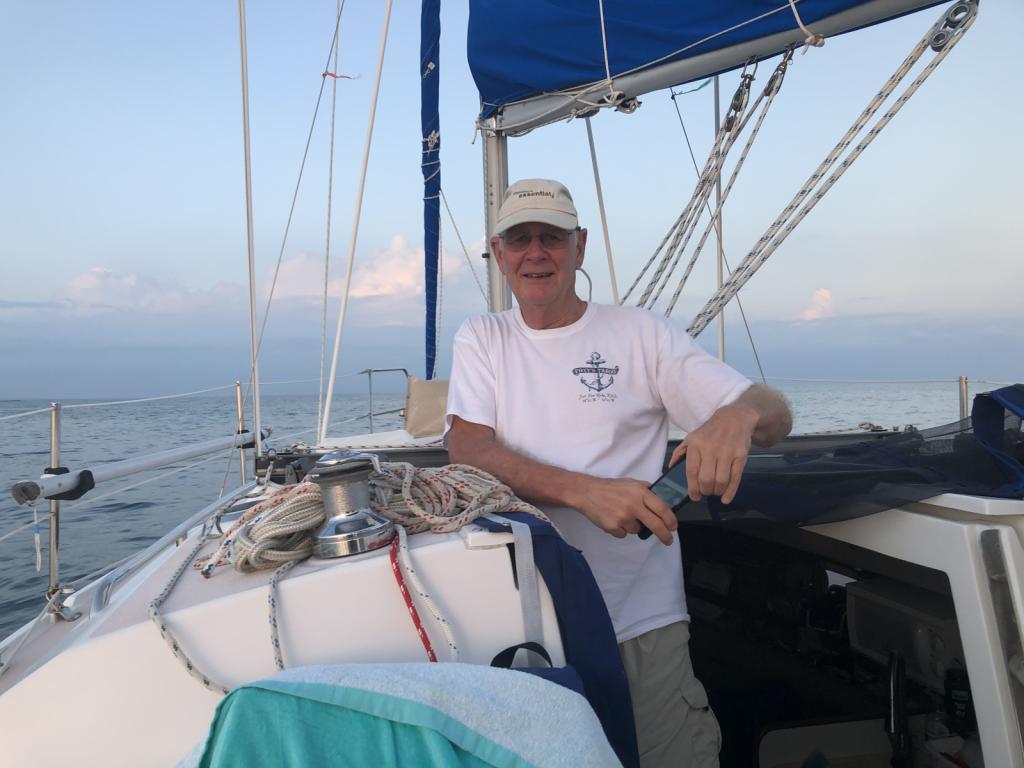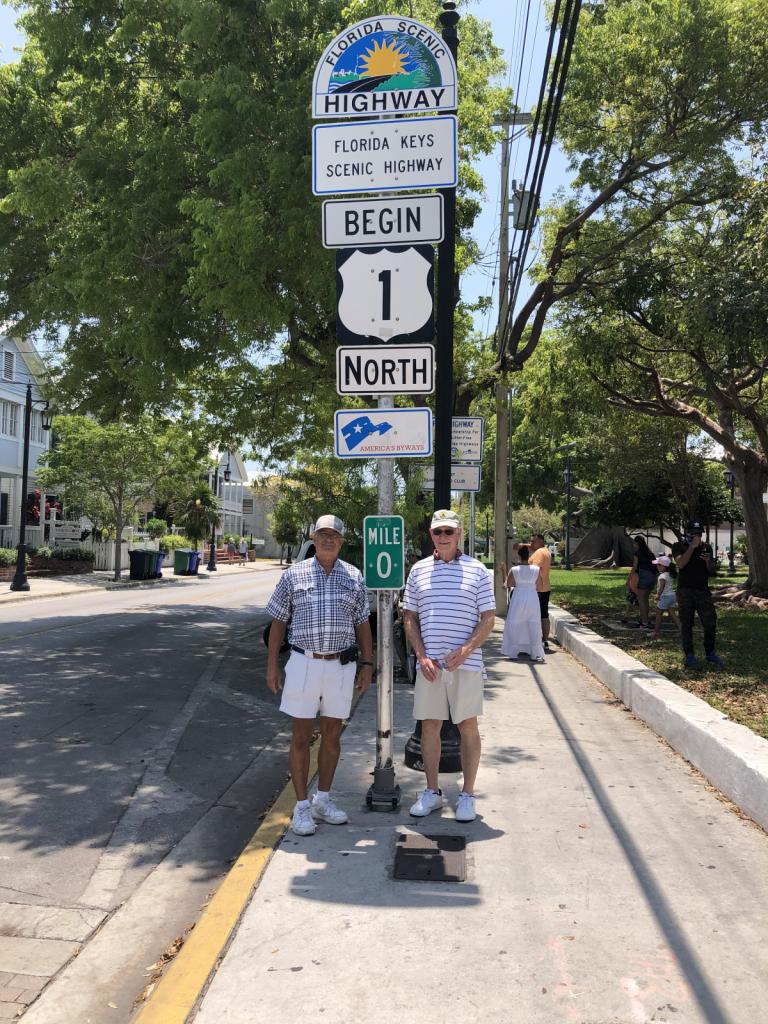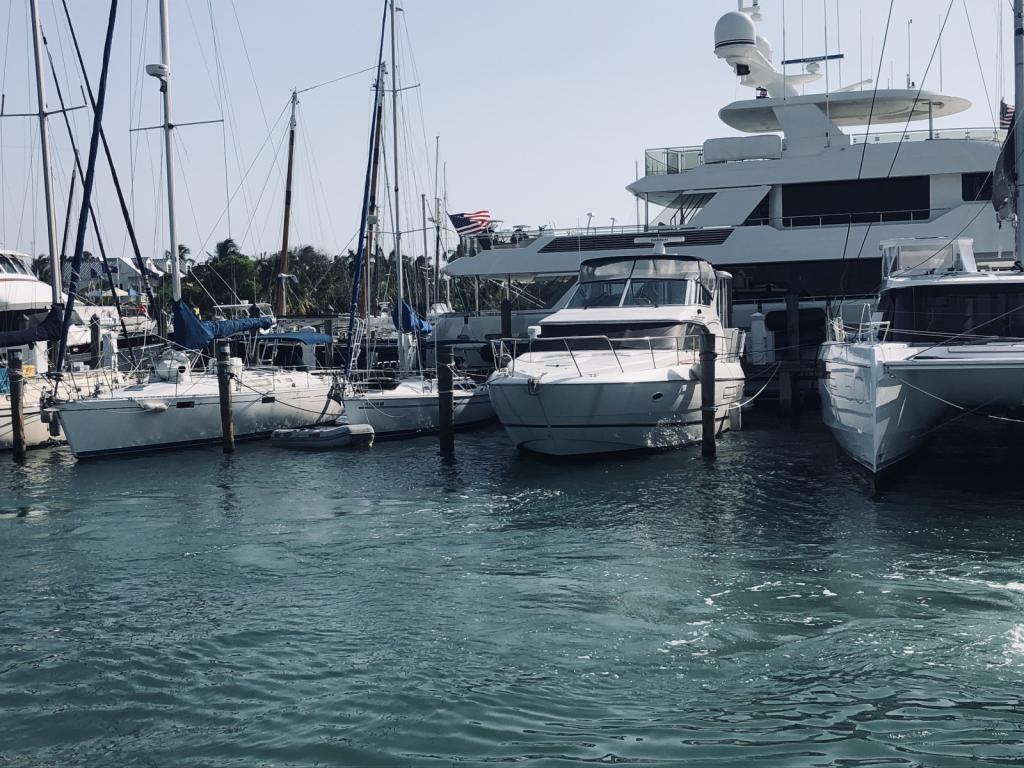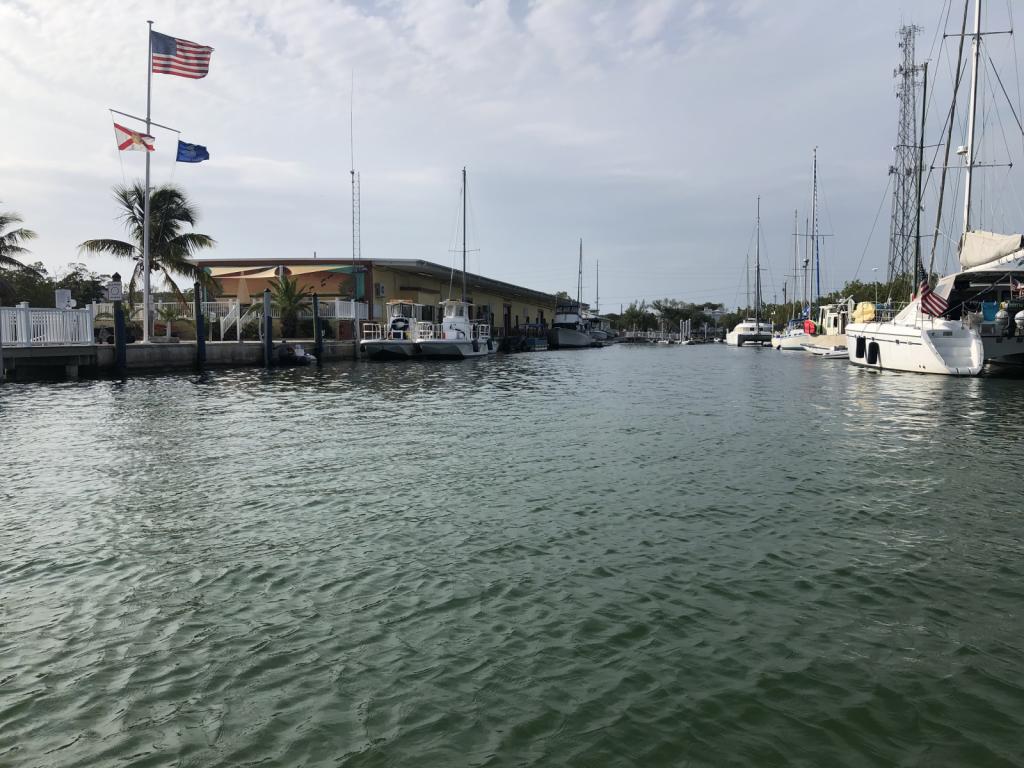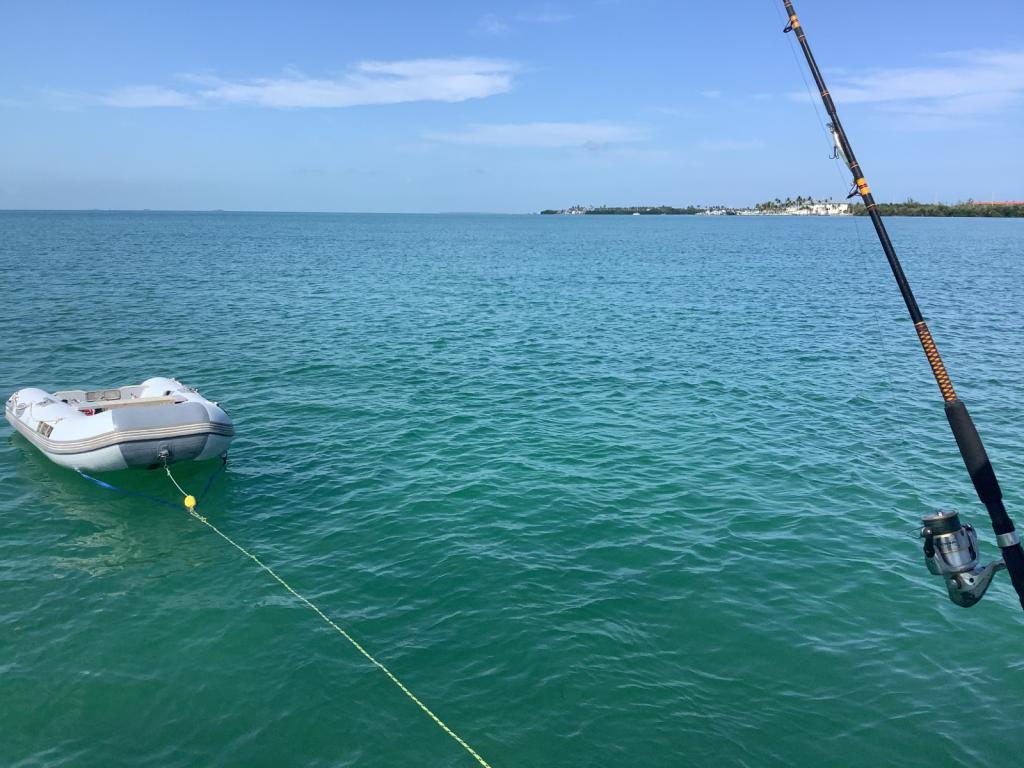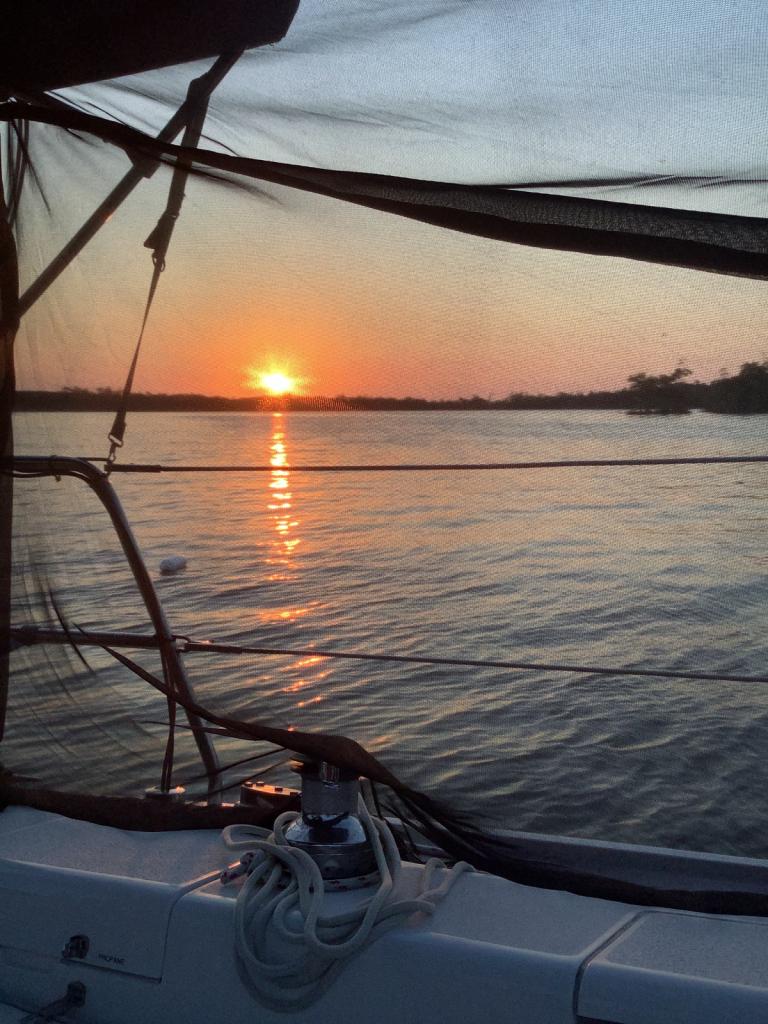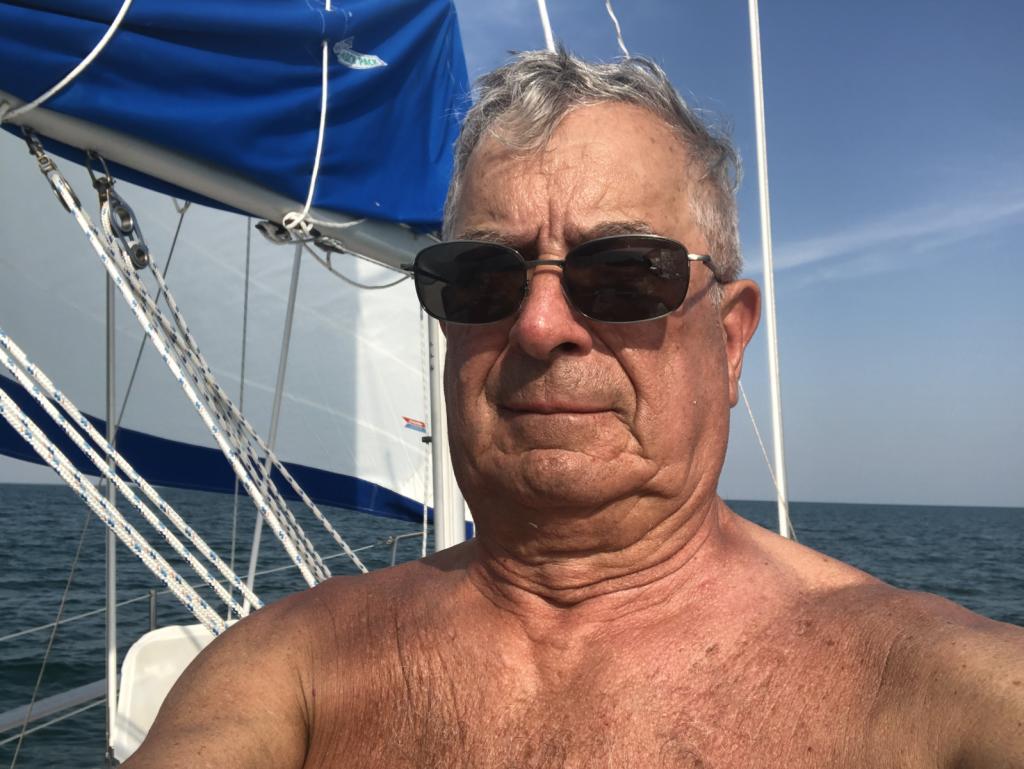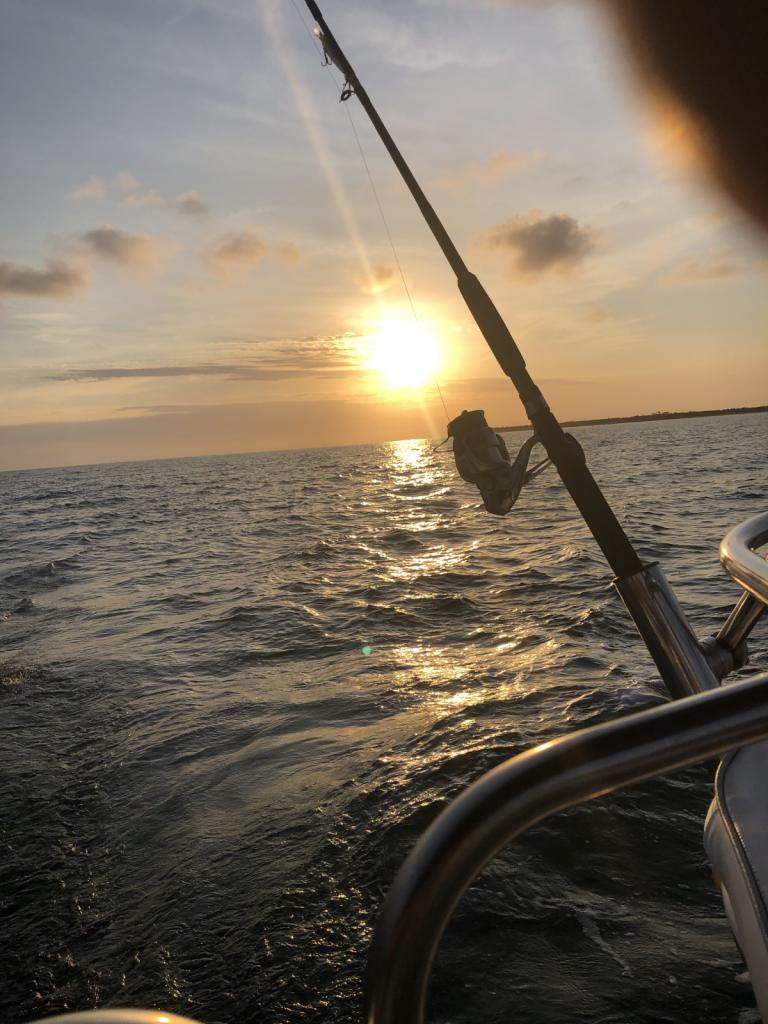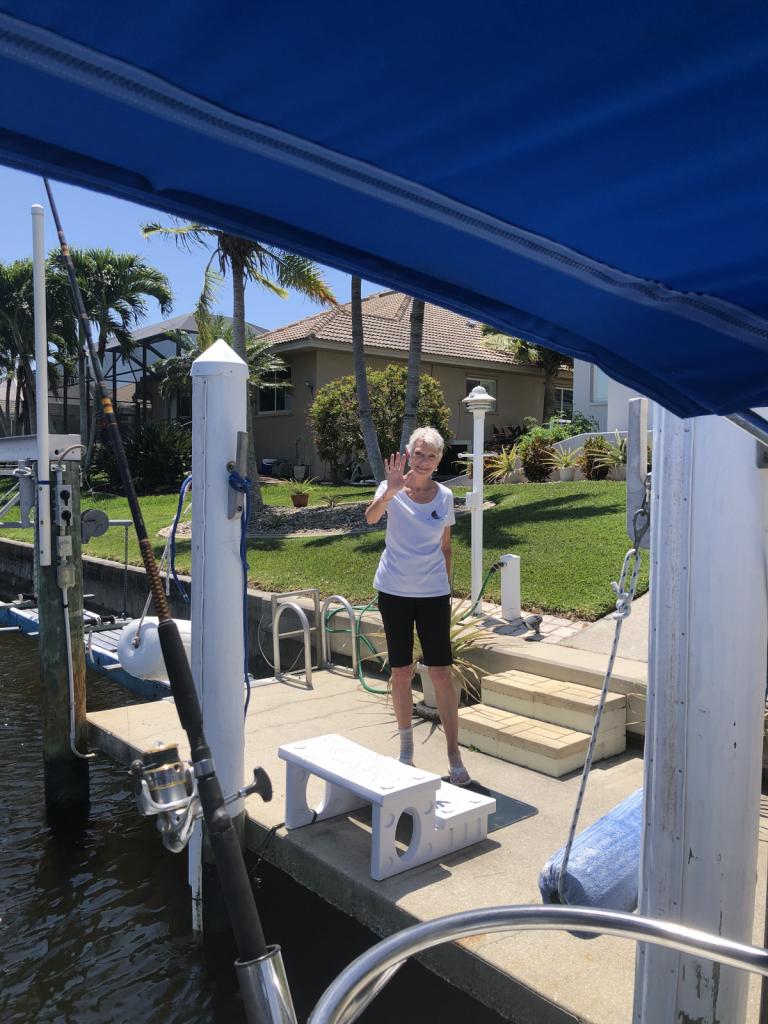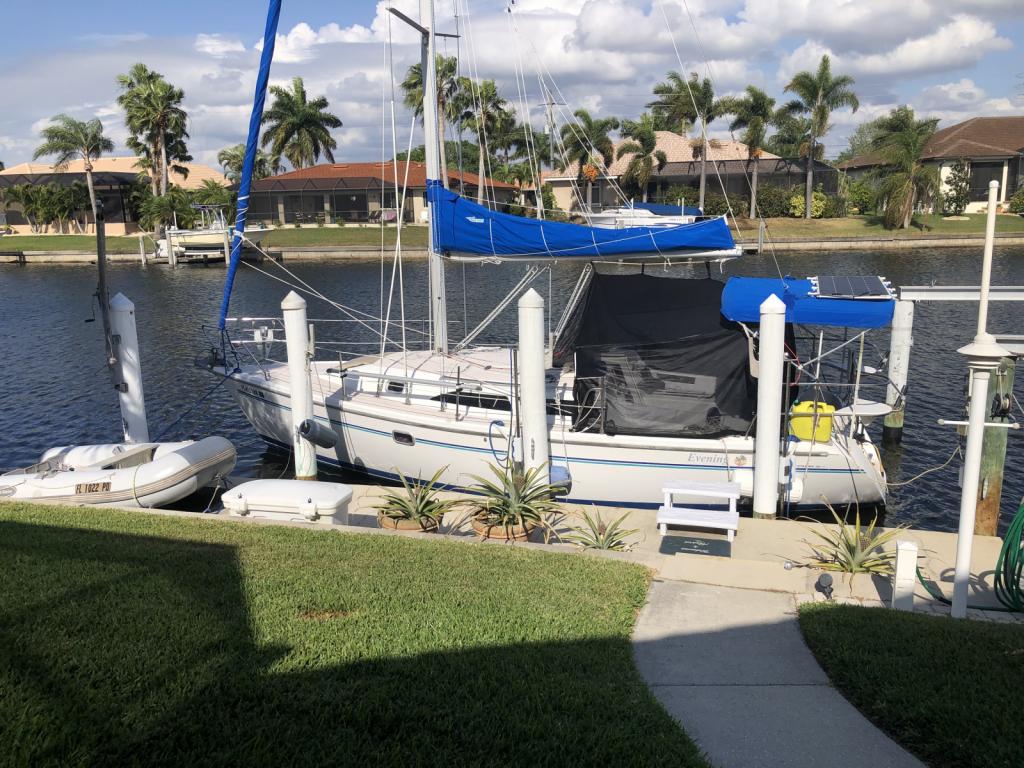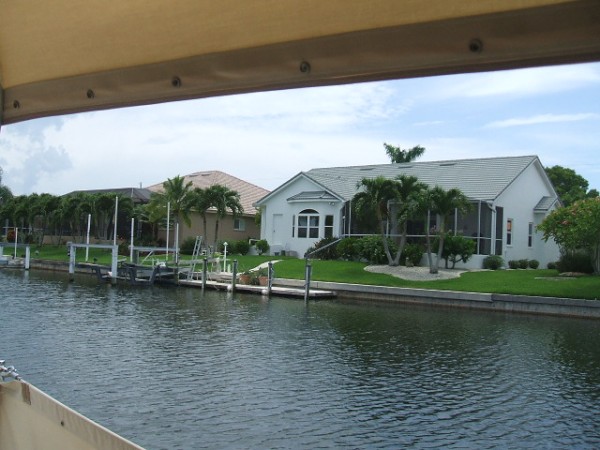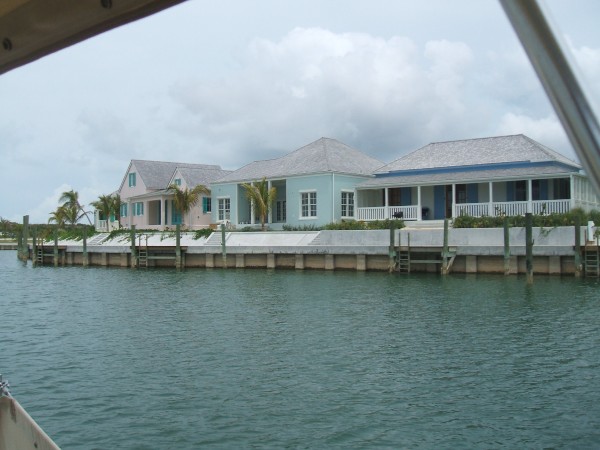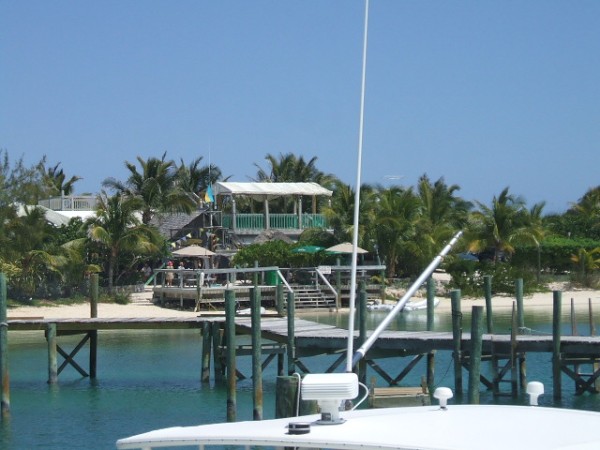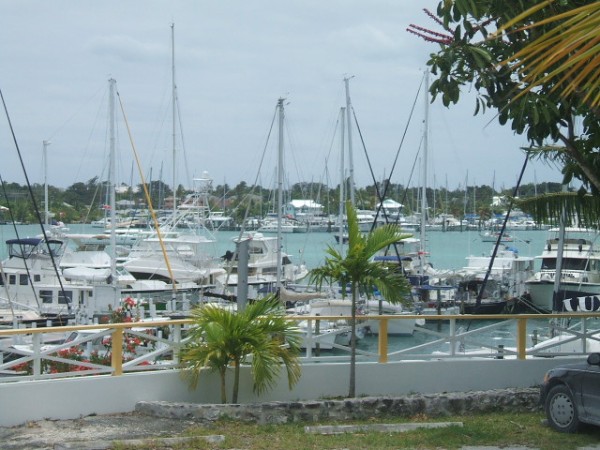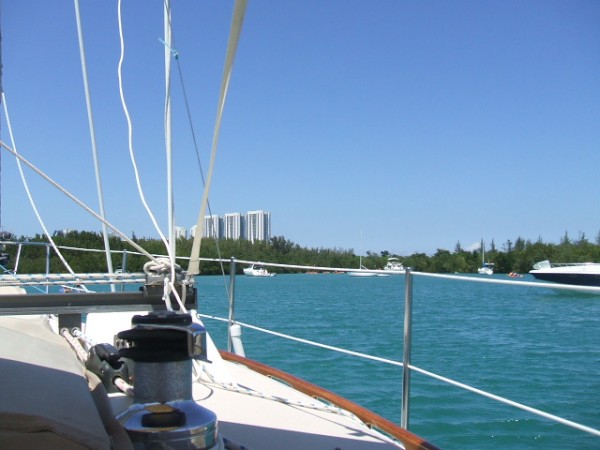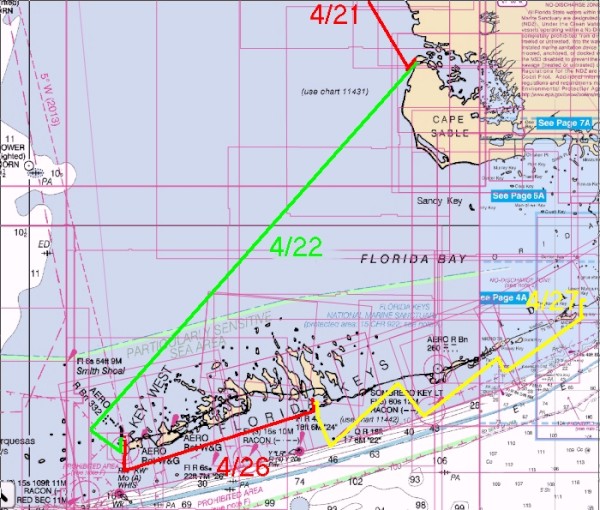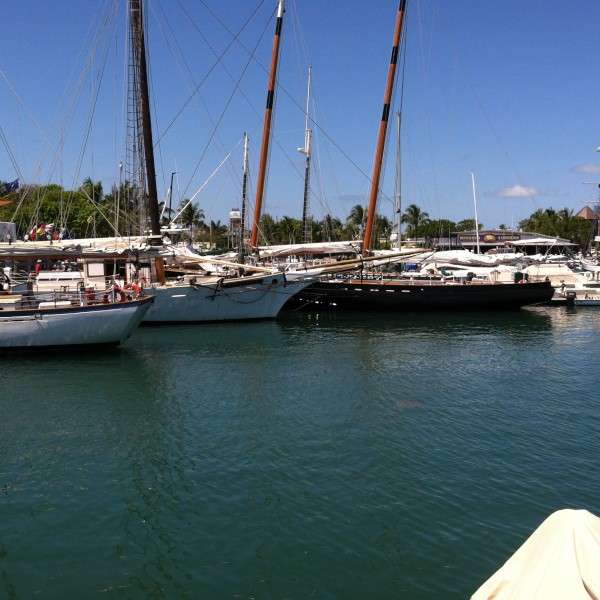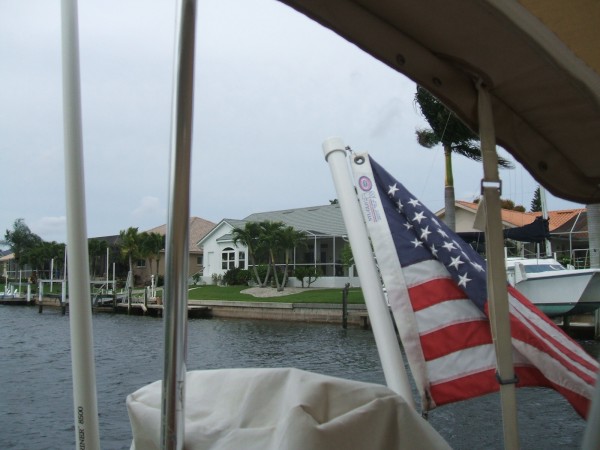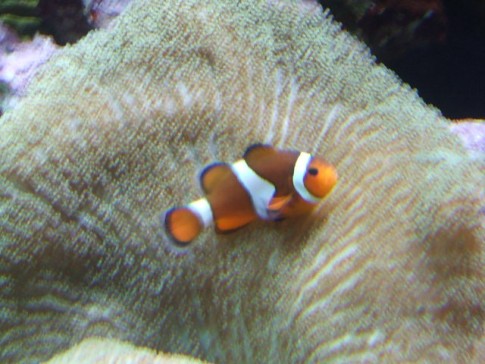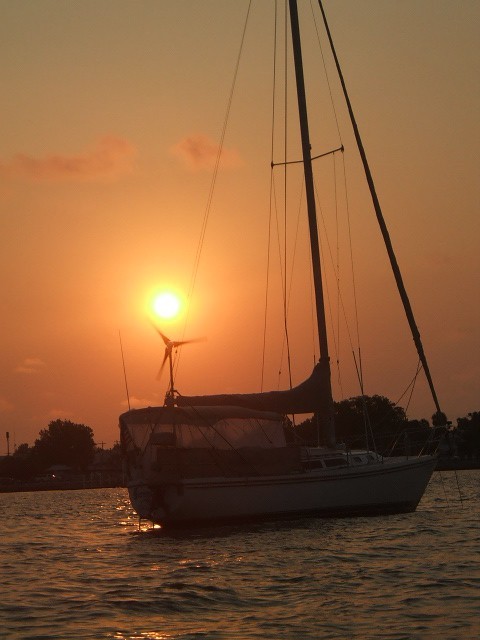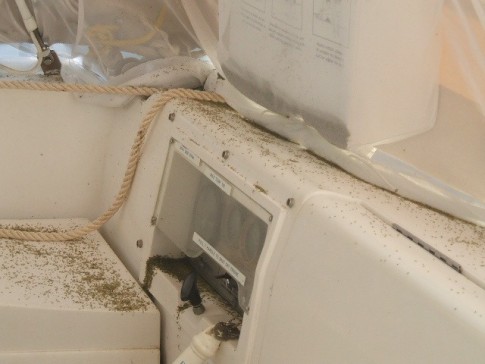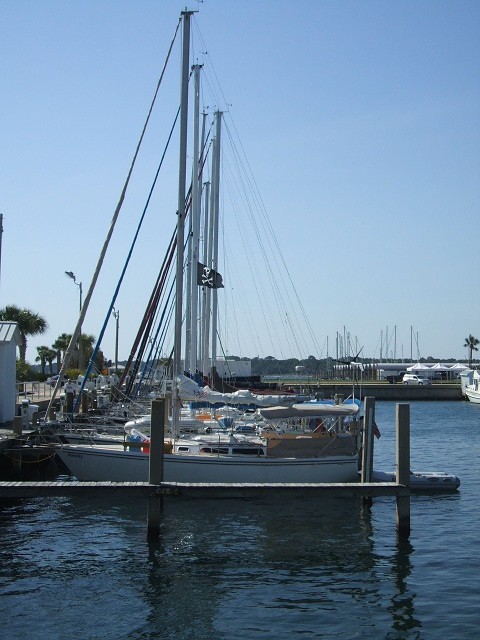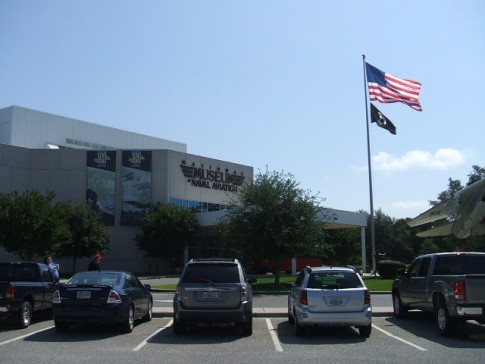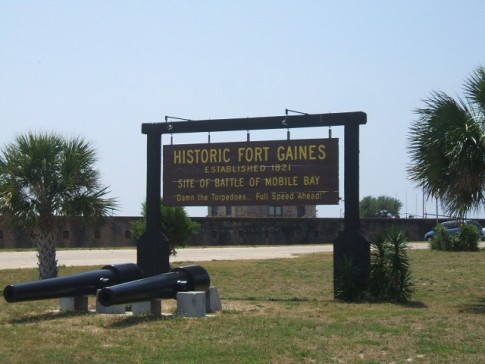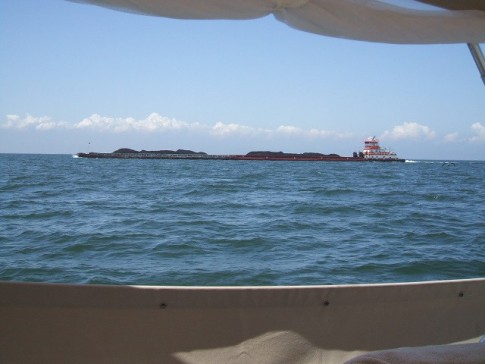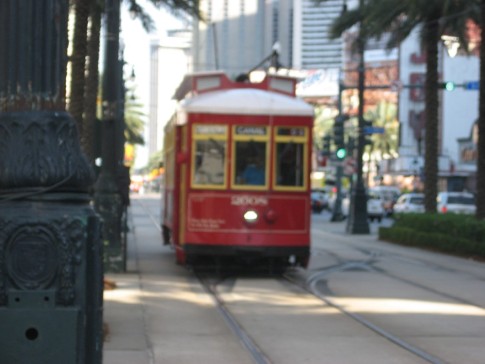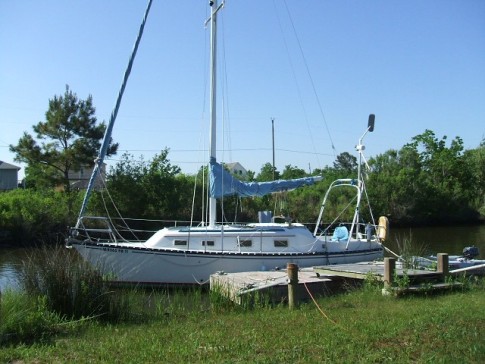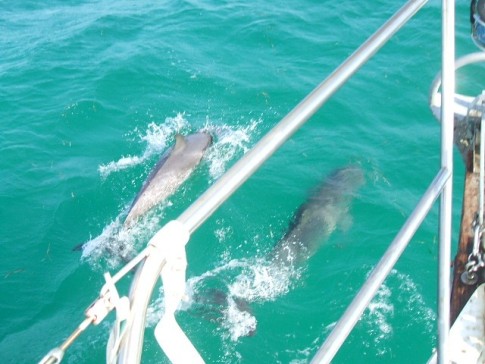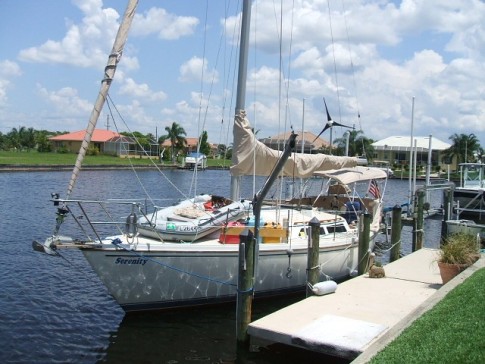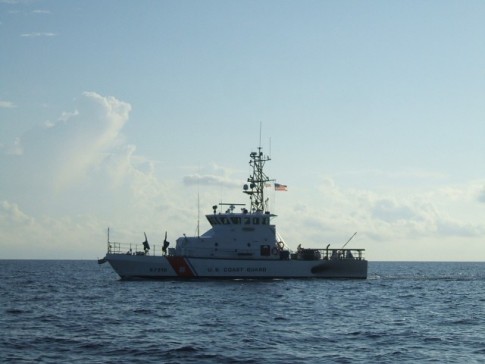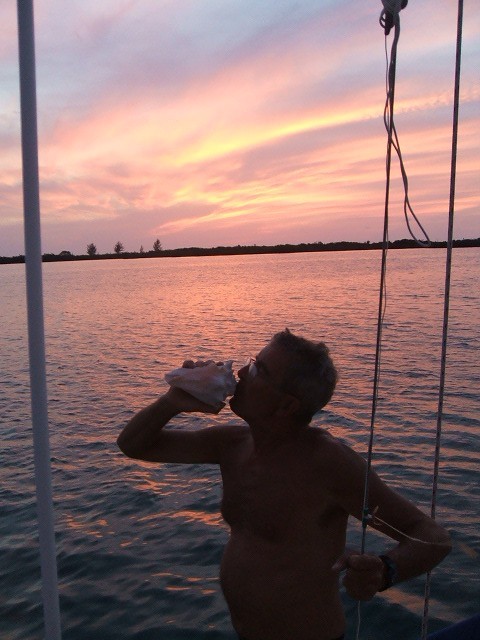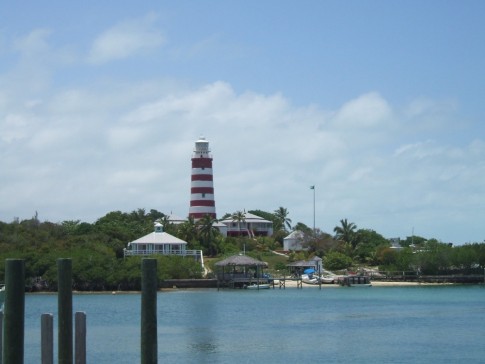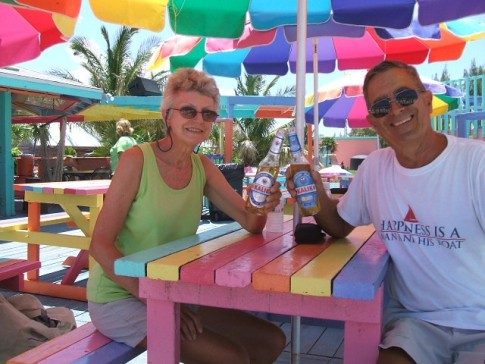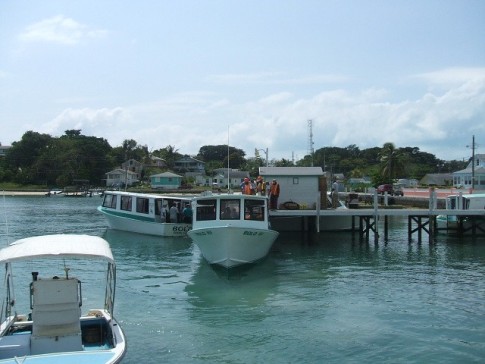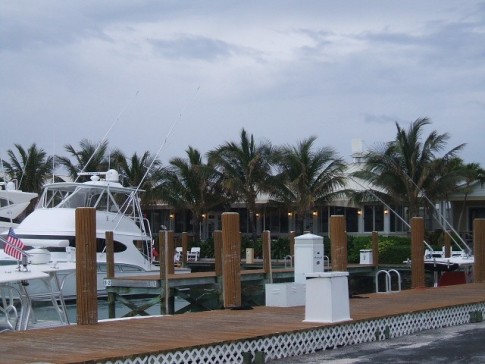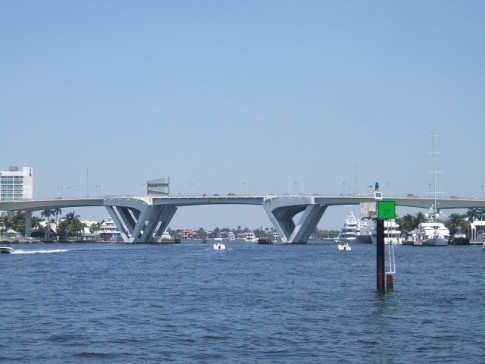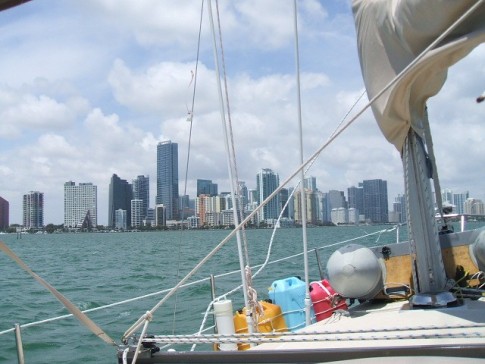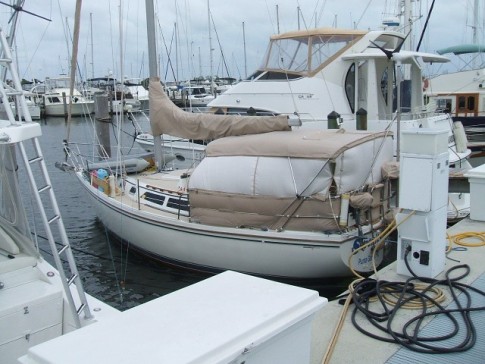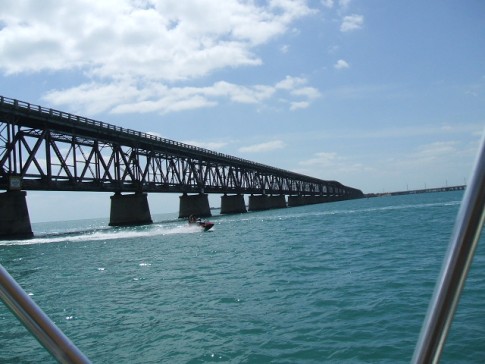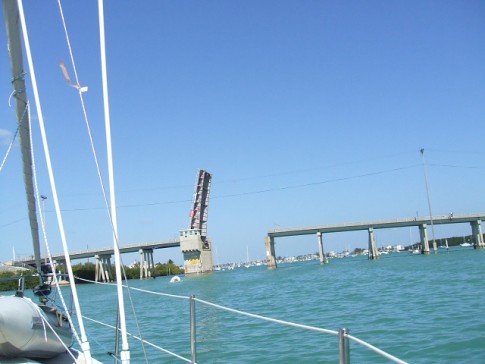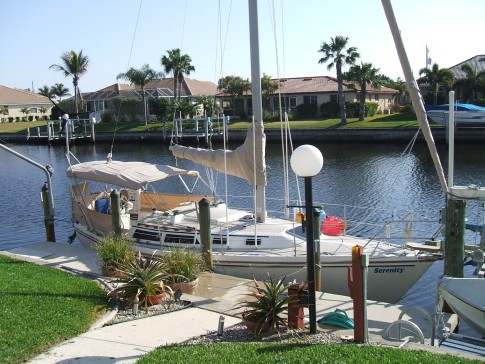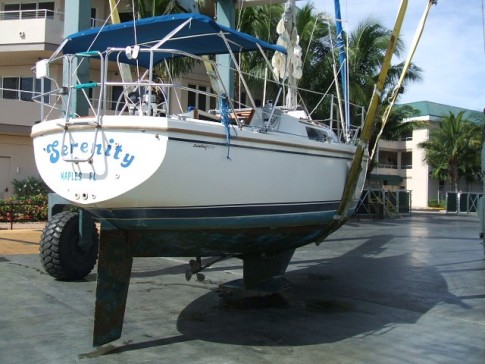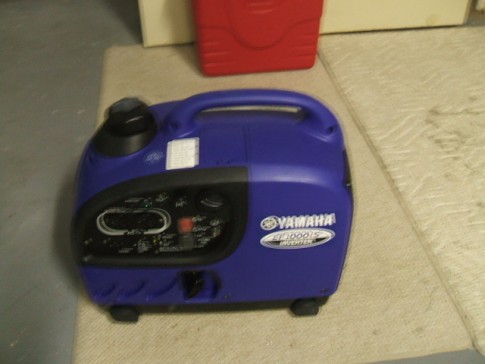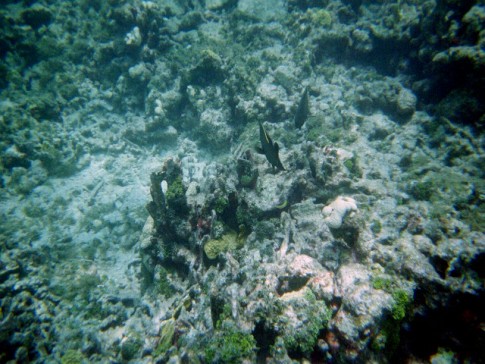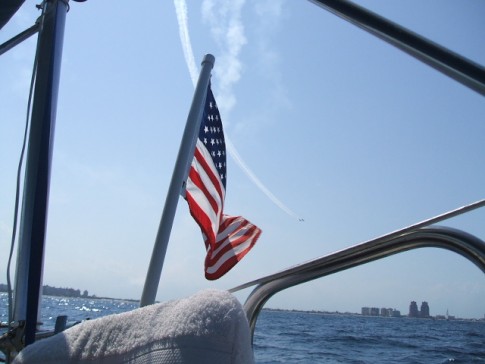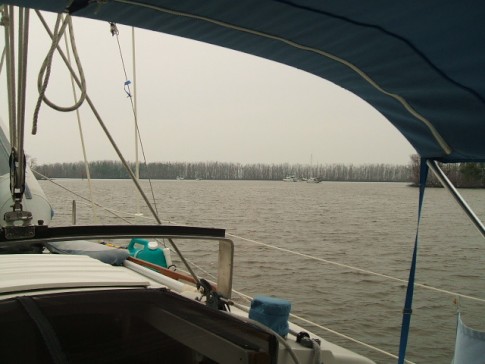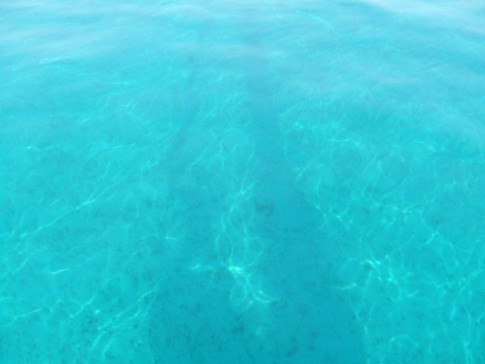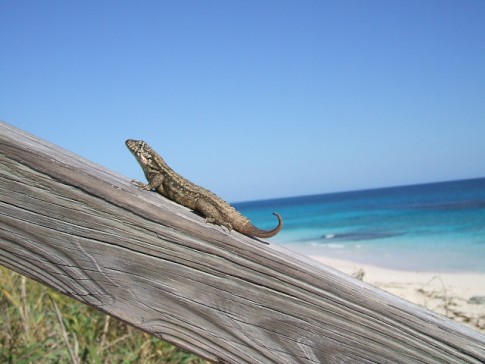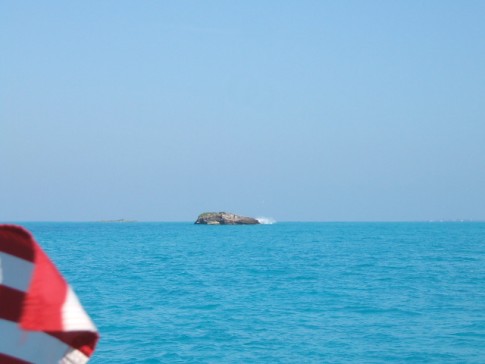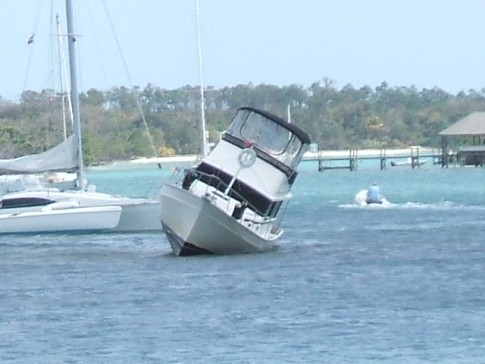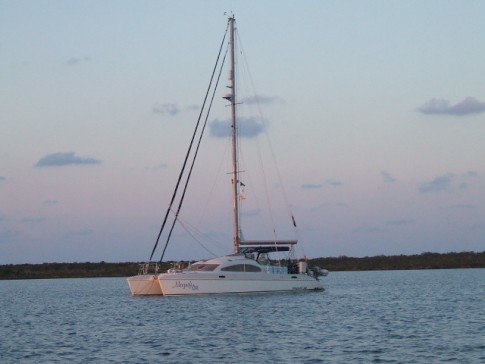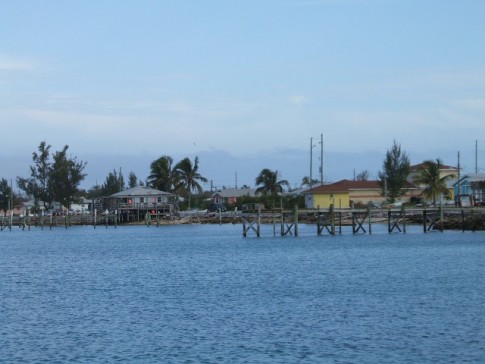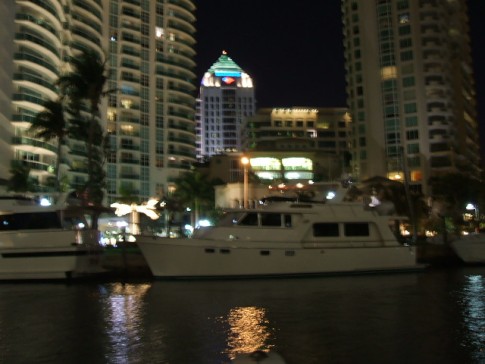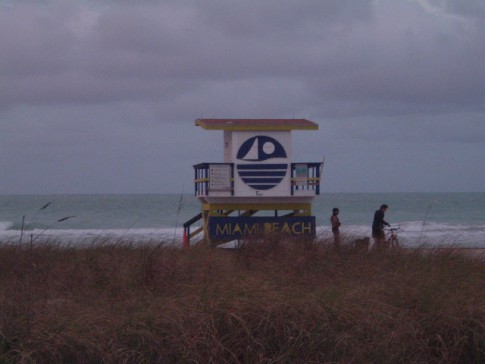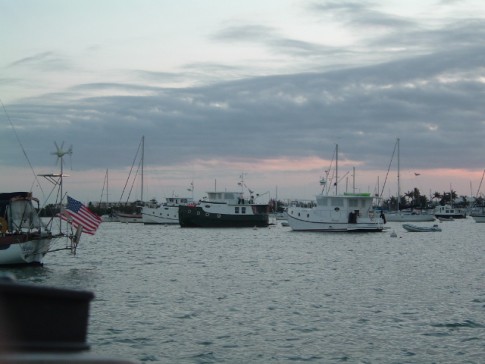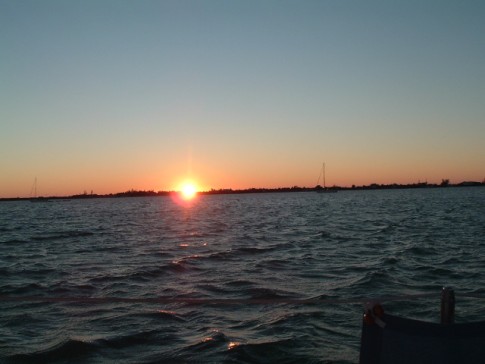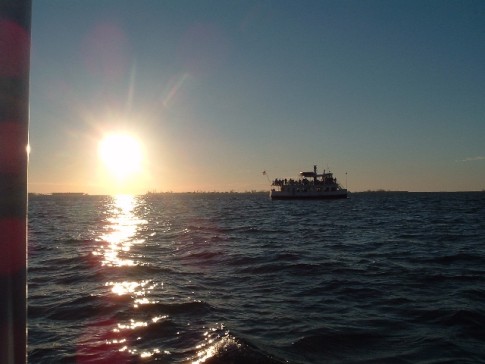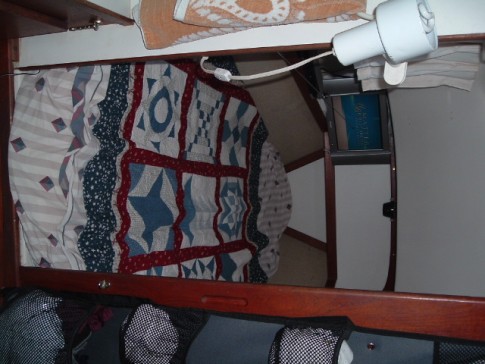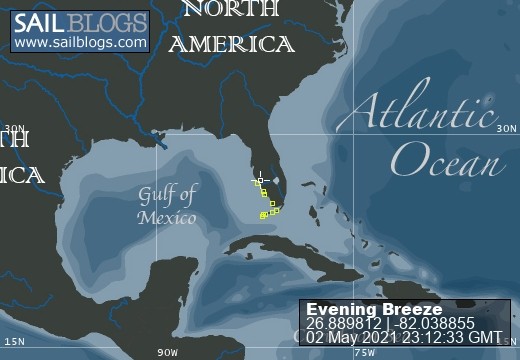
Evening Breeze in Paradise
The adventures of the Evening Breeze, a 1996 Catalina 28 and Capt. Warren Renninger as they wander around the Gulf Coast
02 May 2021 | Home Again
02 May 2021 | Charlotte Harbor, Useppa Island
30 April 2021 | Smokehouse Bay, Marco Island
30 April 2021 | Little Shark River
28 April 2021 | Boot Key Harbor, Marathon
27 April 2021 | Boot Key Harbor, Marathon
27 April 2021 | Boot Key Harbor, Marathon
27 April 2021 | Key West
27 April 2021 | Key West
23 April 2021 | Key West Bight Marina
22 April 2021 | Key West
21 April 2021 | Key West
20 April 2021 | Saddlebunch Harbor
19 April 2021 | Boot Key Harbor, Marathon
18 April 2021 | Long Key
18 April 2021 | Little Shark River
18 April 2021 | Pavillion Key
15 April 2021 | Naples City Mooring Field
14 April 2021 | Cayo Costa
27 March 2021 | Punta Gorda
Lessons Learned - What worked and what didn't
21 May 2007 | Home - Punta Gorda
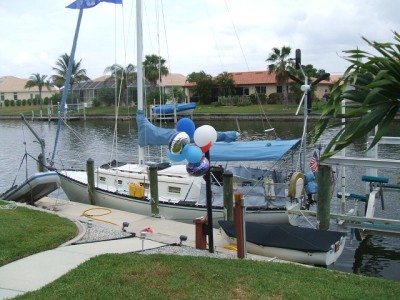
Having a well-tested boat, engine, transmission, and sails worked. Puff's Nanni diesel had been overhauled 5 years earlier and had been gone over by a mechanic and me a few months earlier when it had power problems. The problem was caused by exhaust particles building up where the cooling water enters the exhaust system. Once cleaned out, and with a whole new raw water pump just for safety sake, it ran the 300 hours plus without a problem.
The next most important item was actually 3 GPS units. We started out with a Garmin 182C, an old Magellan Map 410 and a Magellan 315. I used the 315 for bearing, speed and cross track error in a large font I could see easily. The 182C was connected to the autopilot at the helm and the 410 was a backup. The 410 died 4 days into the trip and I replaced it with a Garmin Map76 which uses the same chart system as the 182C and you are allowed to download the maps to two of your own GPSs so it worked out well. My only complaint with the Garmins is that they do not show all the details on all the maps. A marina that shows on one map may not display on the chart the GPS is displaying. The BlueChart 8.5 maps were fantastic for the most part. In many places I was able to find an anchorage out of the weather because of the accuracy of the charts. They were almost as good as the Explorer charts for the Abacos.
When single handing a boat, an autopilot is a must. My 10-year old Navico (now Simrad) Wheelpilot (nicknamed Otto) with Corvus 600 remote worked fine the whole trip. Otto was at the helm 95% of the time, even in the Intercoastal Waterway. Using the remote made it possible to move around and maintain heading and make required course changes with ease. Of course while sailing, it requires a fairly steady wind and good sail balance. At times the course under sail looked like a drunken captain was at the wheel. Then it was time to trim sails or adjust Otto's gain and sensitivity.
The old reliable Windbugger, wind generator did a good job of keeping the batteries charged when the winds were 10 mph or more. It is relatively quiet and other than its size, I like it better than any others I saw. Too bad they are no longer in business except for repair parts. The Nanni diesel alternator only puts out 10 amps so I couldn't rely on it to do anything more than maintain what battery power existed. For the light wind days, I bought a Yamaha portable gas generator of 1000 watts capacity. It fit into the lazaret and was able to power two battery chargers that normally charged the 8D AGM (425 amp hour) house battery in about 2 hours. One advantage of the AGM (glass mat) battery is that it will take a much larger charge rate than a gel or standard lead-acid battery. All said, I only used the Yamaha about 10 times due to good winds and the days spent in marinas with shore power. It normally worked out that I hit a marina every 10 days (laundry time).
I purchased a neighbor's 5 hp Nissan outboard for the inflatable dinghy. I don't believe in towing a dinghy with a motor on it, so I put the Nissan on a transom mount on Puff. That way I could use it to power Puff if necessary. And it was one day in Miami when trying to fight winds and chop that brought Puff's speed down to 1 knot at full throttle. With the Nissan assist we were able to get up to almost 3 knots. The mount also made it easier to mount and dismount the Nissan onto the dinghy. I made a hoist system that I swung off the Windbugger pole. The system made from a small boom vang gave me a 3 to 1 advantage when lifting the motor. I also used the same hoist with a spinnaker pole and spinnaker halyard to hoist the dinghy onto the deck when necessary.
Spending 80 days anchored out, anchoring is important. A 22 pound Delta did a reasonable job in sand and mud. When the bottom was hard it didn't do well and I used a Fortress FX11 or a 45 pound Danforth when the winds were going to howl. I learned early on that if you know the winds will blow, put out the heavy stuff to start. The best lesson was using a kellet or weight on the anchor line to absorb shock and keep the line pull more horizontal. I made my kellet from a 15 pound dumbbell weight and chain. I normally let it down the anchor line until it was just touching bottom. I also learned to let out more scope than I thought necessary when setting the anchor and setting the anchor with the kellet on the line. After the anchor was set, I would take in any excess scope to ride in line with other anchored boats. I also hung a GPS in the berth hatch with the anchor alarm on.
Weather Information. NOAA Marine forecasts were good for the US waters and fair for crossing the Gulf Stream info. For the Caribbean, Chris Parker's Caribbean Weather net on HF Single Side Band was the gold standard. I used a Grundig YachtBoy portable radio with Single Side Band to get Chris' broadcasts (http://www.caribwx.com/main.html). It took a while to figure out the best way to use the portable. First I had to tune up and down the frequency range to find what worked. For the 4045 Hz frequency, I tuned 4041 or 4040 to get understandable reception. I strung an external antenna on the spreader flag halyard which improved reception.
For entertainment, I loaded 1390 songs on an IPOD and played it through the FM stereo radio. When in TV reception areas, I had a 13-inch Sharp LCD TV that actually runs on 12 volts. It is normally sold as a 120 volt unit but it has a transformer to convert the 120 volts to 12 volts. So I rigged a 12 volt line to the V-berth and powered it directly from the boat's system. It uses so little power (about 2 amps) you don't mind leaving it on.
For refrigeration, I relied on a Norcold 12-volt DC/120 volt AC refrigerator. It draws only 2.2 amps when running and runs about 1/3 the time. It doesn't make ice so I used Cubies, which are soft plastic pouches filled with water about the size of an ice cube. I put them in the freezer area and even if not fully frozen, they would cool a drink down.
For storage, I found folding storage cubes at Wal-Mart. They were handy and if left out while underway, I would run a bungee around them to hold them in place.
A few things didn't work well. Wireless reception on my laptop computer was poor in most marinas that said they provided wireless. Get a remote antenna for your wireless.
Clothing. I took much too much. Same for food. I tried to carry a month's supply and ended up bringing that much back. If fresh food is available as it is in the states and major Bahamas ports, don't load the boat down with cans upon cans.
Spare gas cans. Try to find some that don't vent fuel when they sit in the sun. The cheap "Blitz" brand vented so much that I had to keep them only half full. They also don't pour easily without slopping fuel around. I found my best method of refilling from the spares was an outboard fuel hose without connections that I used to either pump by squeezing the bulb or to set up a siphon. A lot less spillage that way.
Power. 90% of the time we were under power when underway. Only 10 days were such that the right combination of wind speed, wind direction, and course allowed for pure sailing. About 30% of the time we were going too close to the wind to sail but could get some assistance from the sails if we were under power. About 30% of the time there was no wind or too little for the distance we needed to make. Then 30 % of the time, it was "Wind on Nose" and power was the only way to travel. On a trip with destinations, schedules, and weather constraints, adequate power makes it much better. A 10-horsepower diesel in a loaded 27 foot sailboat is not adequate. Oh how I envied those folks who could do 5 to 6 knots into a 25 knot headwind.
Sailblogs. This web site is simple to use and I have received many compliments on the look of the site. I endorse it and will use it for the next trip.
The next most important item was actually 3 GPS units. We started out with a Garmin 182C, an old Magellan Map 410 and a Magellan 315. I used the 315 for bearing, speed and cross track error in a large font I could see easily. The 182C was connected to the autopilot at the helm and the 410 was a backup. The 410 died 4 days into the trip and I replaced it with a Garmin Map76 which uses the same chart system as the 182C and you are allowed to download the maps to two of your own GPSs so it worked out well. My only complaint with the Garmins is that they do not show all the details on all the maps. A marina that shows on one map may not display on the chart the GPS is displaying. The BlueChart 8.5 maps were fantastic for the most part. In many places I was able to find an anchorage out of the weather because of the accuracy of the charts. They were almost as good as the Explorer charts for the Abacos.
When single handing a boat, an autopilot is a must. My 10-year old Navico (now Simrad) Wheelpilot (nicknamed Otto) with Corvus 600 remote worked fine the whole trip. Otto was at the helm 95% of the time, even in the Intercoastal Waterway. Using the remote made it possible to move around and maintain heading and make required course changes with ease. Of course while sailing, it requires a fairly steady wind and good sail balance. At times the course under sail looked like a drunken captain was at the wheel. Then it was time to trim sails or adjust Otto's gain and sensitivity.
The old reliable Windbugger, wind generator did a good job of keeping the batteries charged when the winds were 10 mph or more. It is relatively quiet and other than its size, I like it better than any others I saw. Too bad they are no longer in business except for repair parts. The Nanni diesel alternator only puts out 10 amps so I couldn't rely on it to do anything more than maintain what battery power existed. For the light wind days, I bought a Yamaha portable gas generator of 1000 watts capacity. It fit into the lazaret and was able to power two battery chargers that normally charged the 8D AGM (425 amp hour) house battery in about 2 hours. One advantage of the AGM (glass mat) battery is that it will take a much larger charge rate than a gel or standard lead-acid battery. All said, I only used the Yamaha about 10 times due to good winds and the days spent in marinas with shore power. It normally worked out that I hit a marina every 10 days (laundry time).
I purchased a neighbor's 5 hp Nissan outboard for the inflatable dinghy. I don't believe in towing a dinghy with a motor on it, so I put the Nissan on a transom mount on Puff. That way I could use it to power Puff if necessary. And it was one day in Miami when trying to fight winds and chop that brought Puff's speed down to 1 knot at full throttle. With the Nissan assist we were able to get up to almost 3 knots. The mount also made it easier to mount and dismount the Nissan onto the dinghy. I made a hoist system that I swung off the Windbugger pole. The system made from a small boom vang gave me a 3 to 1 advantage when lifting the motor. I also used the same hoist with a spinnaker pole and spinnaker halyard to hoist the dinghy onto the deck when necessary.
Spending 80 days anchored out, anchoring is important. A 22 pound Delta did a reasonable job in sand and mud. When the bottom was hard it didn't do well and I used a Fortress FX11 or a 45 pound Danforth when the winds were going to howl. I learned early on that if you know the winds will blow, put out the heavy stuff to start. The best lesson was using a kellet or weight on the anchor line to absorb shock and keep the line pull more horizontal. I made my kellet from a 15 pound dumbbell weight and chain. I normally let it down the anchor line until it was just touching bottom. I also learned to let out more scope than I thought necessary when setting the anchor and setting the anchor with the kellet on the line. After the anchor was set, I would take in any excess scope to ride in line with other anchored boats. I also hung a GPS in the berth hatch with the anchor alarm on.
Weather Information. NOAA Marine forecasts were good for the US waters and fair for crossing the Gulf Stream info. For the Caribbean, Chris Parker's Caribbean Weather net on HF Single Side Band was the gold standard. I used a Grundig YachtBoy portable radio with Single Side Band to get Chris' broadcasts (http://www.caribwx.com/main.html). It took a while to figure out the best way to use the portable. First I had to tune up and down the frequency range to find what worked. For the 4045 Hz frequency, I tuned 4041 or 4040 to get understandable reception. I strung an external antenna on the spreader flag halyard which improved reception.
For entertainment, I loaded 1390 songs on an IPOD and played it through the FM stereo radio. When in TV reception areas, I had a 13-inch Sharp LCD TV that actually runs on 12 volts. It is normally sold as a 120 volt unit but it has a transformer to convert the 120 volts to 12 volts. So I rigged a 12 volt line to the V-berth and powered it directly from the boat's system. It uses so little power (about 2 amps) you don't mind leaving it on.
For refrigeration, I relied on a Norcold 12-volt DC/120 volt AC refrigerator. It draws only 2.2 amps when running and runs about 1/3 the time. It doesn't make ice so I used Cubies, which are soft plastic pouches filled with water about the size of an ice cube. I put them in the freezer area and even if not fully frozen, they would cool a drink down.
For storage, I found folding storage cubes at Wal-Mart. They were handy and if left out while underway, I would run a bungee around them to hold them in place.
A few things didn't work well. Wireless reception on my laptop computer was poor in most marinas that said they provided wireless. Get a remote antenna for your wireless.
Clothing. I took much too much. Same for food. I tried to carry a month's supply and ended up bringing that much back. If fresh food is available as it is in the states and major Bahamas ports, don't load the boat down with cans upon cans.
Spare gas cans. Try to find some that don't vent fuel when they sit in the sun. The cheap "Blitz" brand vented so much that I had to keep them only half full. They also don't pour easily without slopping fuel around. I found my best method of refilling from the spares was an outboard fuel hose without connections that I used to either pump by squeezing the bulb or to set up a siphon. A lot less spillage that way.
Power. 90% of the time we were under power when underway. Only 10 days were such that the right combination of wind speed, wind direction, and course allowed for pure sailing. About 30% of the time we were going too close to the wind to sail but could get some assistance from the sails if we were under power. About 30% of the time there was no wind or too little for the distance we needed to make. Then 30 % of the time, it was "Wind on Nose" and power was the only way to travel. On a trip with destinations, schedules, and weather constraints, adequate power makes it much better. A 10-horsepower diesel in a loaded 27 foot sailboat is not adequate. Oh how I envied those folks who could do 5 to 6 knots into a 25 knot headwind.
Sailblogs. This web site is simple to use and I have received many compliments on the look of the site. I endorse it and will use it for the next trip.
Comments
| Vessel Name: | Evening Breeze |
| Vessel Make/Model: | 1996 Catalina 28 MK II |
| Hailing Port: | Punta Gorda, Florida |
| Crew: | Warren & Karen Renninger |
| About: | Warren - 26 years Air Force, 13 insurance, 11 West Marine Karen - 30 years Mary Kay, artist, quilter |
| Extra: | |
| Home Page: | http://www.sailblogs.com/member/EveningBreeze |
Evening Breeze's Photos - Puff in Paradise (Main)
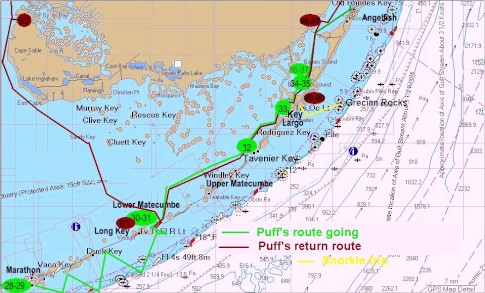 |
Our current location should be on the first photo. The rest should give an idea of how we got here.
11 Photos
Created 15 May 2007
|
Evening Breeze
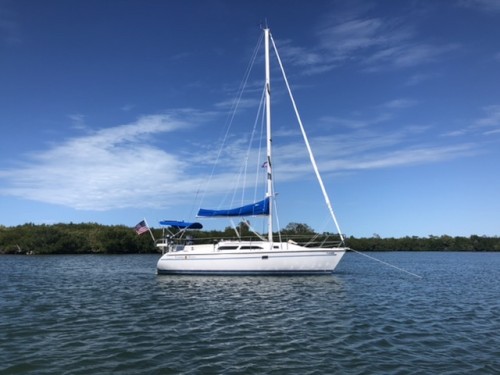
Who: Warren & Karen Renninger
Port: Punta Gorda, Florida
Favorites
WHERE AM I?
Go to the Current Position above to see the latest locations via Google Earth
